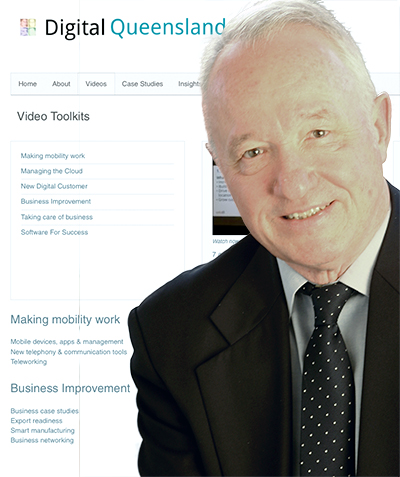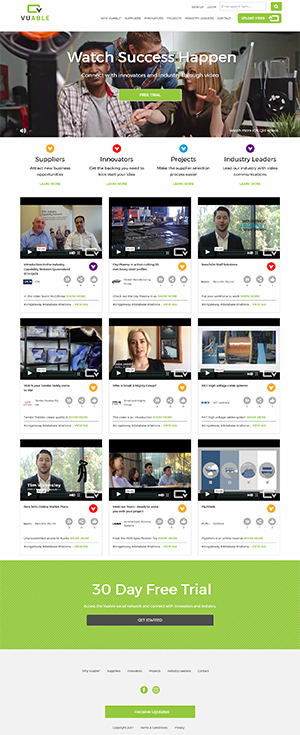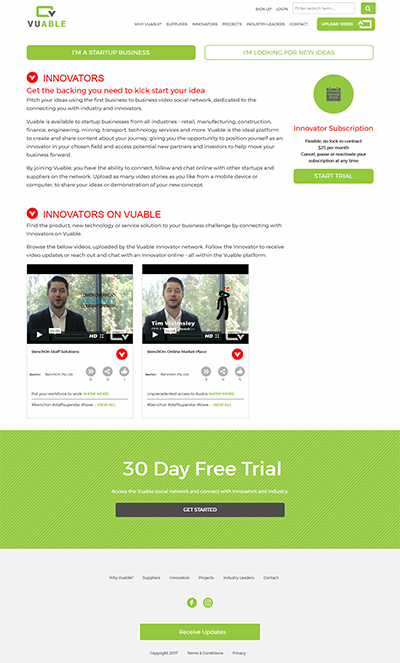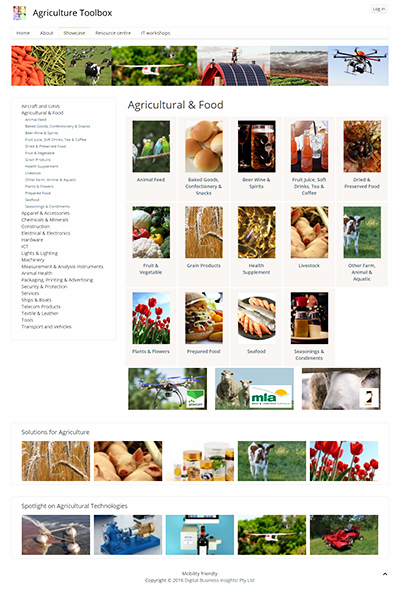Digital Business insights by John Sheridan >>
WORK as we have known it is dying. Careers are dead. Offices are disappearing slowly.
Intriguingly, there is still a Careers Advisors Association in Australia, though I wonder what they know that nobody else does.
Work is now contracts, part time and freelance. Even academia, government and professional services are increasingly shifting into contractual insecurity.
There is still stability at the top of course, which is what you would expect with senior managers, vice chancellors and directors looking after themselves, but it is now virtually impossible to steadily climb the ‘ladder’ unless you begin at the top by starting your own business. 
So how easy will it be for our children to navigate this new world of work? We continue to make it increasingly difficult for them compared to how it used to be. Free education for instance.
Are we preparing them properly for this much harsher world or still selling them ancient myths and dreams based on our educational years and working experience?
For what is this madness, that a generation of politicians who received a free education that gave them a chance of success in a job rich world, condemn the current generation to pay for their own education in a world where jobs disappear daily?
And we are doing this to them. It is not their fault. It is our fault.
We are the ones making the ‘business decisions’ justifying offshoring, outsourcing, freelancing, contracting and part time, taking the dubious advice of the ‘Big 4’ and other HR consultants driven by “having to make the most of a contracting budget”.
There is a choice here. But driven by fashion and “everybody else is doing it” we march down the “offshoring, outsourcing, contracts, redundancies” path towards an uncertain future. Freelancer.com is a good idea for Freelancer.com.
MILK IT FOR EVERYTHING
THERE IS AN OLD STORY about a King and his Queen. For some reason, his wife wanted to bathe in a pool filled with milk. Maybe it was good for her skin.
So the King asked all his subjects to bring a pot of milk and pour it into the pool overnight. And all night long in the darkness the subjects queued to make their contribution to the Queen’s complexion.
In the morning, the King and Queen awoke to find the pool filled with water.
What had happened? Each person had thought, “Milk costs money. Nobody will notice my single pot of water once it is poured into the swimming pool of milk.”
One pot at a time.
Businesses, corporates, universities and governments are all changing their employment models.
Offshoring, outsourcing, contracts, part time, casual, freelance.
One job at a time, the 20th century, secure, full time career model is disappearing. Forever.
And everybody thinks that their small change in practice won’t make any difference to the greater scheme of things.
One job at a time.
And ministers and policy makers stand and watch.
JOB INSECURITY
WE HAVE now moved from an employment environment of relative security to one of insecurity. With a safety net (Centrelink) designed around regular full time employment.
Work continues to evolve before our eyes, with two things happening at once. Jobs are disappearing (50 percent of them on the way) AND contractual conditions are changing at the same time. Lose. Lose.
Leading to far fewer jobs. Far less job security.
For most people a job is about identity and purpose, about finding a meaningful place in society, a place where effort is rewarded by a feeling of accomplishment as well as financial recompense.
So unemployment is a problem that undermines society, identity, self-respect, confidence and meaning. Unemployment acts like an illness, sapping strength and motivation.
For we tend to measure our value by what we do, not by what we are.
“What do you do for a living?” “Where do you work?” “What are your goals and ambitions?” “What have you achieved with your life so far?”
Now whether that is right or wrong, it is what most of us have come to believe … that our value and meaning in society is measured by what we do, how we earn a living, and the contribution we make.
All contributions are ultimately of portions of our most precious assets – our life, our time, our energy, our attention, our thoughts, our words and our deeds. We exchange our life for reward of some kind – money, fulfillment, recognition and other symbols of achievement.
That is why work is important. And why lack of work is a problem.
NATURE OF WORK CHANGED
AND THE NATURE of work has changed.
The traditional skills – of ‘hand’, ‘eye’ and ‘brain’ – now all demand ‘brain’.
But even the ‘brain’ jobs won’t deliver protection from digital disruption.
For automation is now poking its digital fingers into law firms, hospitals, schools, accountants, engineering, government, universities and mid-tier administration in corporations. A large proportion of the current work ‘force’ will very soon become the work ‘enfeebled’.
Who will look after their interests? Not the unions, because these are not traditional workers. Not the business associations or chambers of commerce, because they are not businesses either.
The self-employed and occasionally employed are trapped in the ever widening, policy gap between government, unions and business organisations, with no organisation looking out for their future.
They are part of an ever-growing host of people swept to one side by the currents of digital change, and the shortsightedness of policy makers.
Half the working or non-working population, whichever way you want to look at it.
The game is now rigged in the wrong direction.
It is like a perverse game of musical chairs, but without the music or indeed any sense of entertainment. Each week thousands and thousands of Australians are out there somewhere looking for a job.
And each week thousands and thousands of Australians don’t find one. Is this because they are not trying hard enough? No.
There are not enough jobs to go around.
DISAPPEARING JOB SECURITY
DISAPPEARING JOBS. Disappearing wages. Disappearing loyalty. Disappearing security. And this process is happening under our watch. Under the government’s watch, who seem unaware and unable to do anything about it.
No wonder people have lost faith in politicians. They talk. They watch. But do they see?
And digital has driven the change. And the continuing impact of computerisation, robotisation and automation is eliminating 50 percent of existing jobs.
And they are not being replaced. New low paid, part time jobs are arising but nowhere near the numbers or the quality required, to replace the dispossessed.
And it is not just full time jobs disappearing. Wages in the existing jobs queuing for elimination or transformation have stagnated.
The result?
Roughly 12.5 percent of people in Australia now live in households below the most severe poverty line used in international research – about 2.5 million people. In the USA it is close to 25 percent.
So we don’t have a lot to learn from Obama or Trump on that score.
Because of the way we connect jobs and value in our society, all these individual unemployed and underemployed Australians are deemed worthless. Surplus to need. The surplus humans in our society that we don’t know what to do with.
And high profile politicians judge them. Publicly. They lack backbone. They lack moral fibre. They are lazy. They are bludgers. They sponge off the rest of us … and so on.
And some high profile politicians even support the unfair, automated Centrelink debt recovery system that punishes the customers it is supposed to support.
Are those Centrelink customers bad people? Are those people losers?
Could they have known this was going to happen 20 or even 10 years ago? Did anybody let them know it was coming? No.
Yet the signs were there. And they still are. The digital revolution has barely begun to disrupt the society we live in. We still have a choice – to manage it for better or continue to let it just “do its thing”.
And the trends are clear. Though the predictions are somewhat confused, admittedly with some pundits still glibly writing off the scale of the change, suggesting that the jobs losses will be made up by job gains elsewhere. And most of those pundits have secure tenure in the ivory tower universities they comment from.
WHERE THE NEW JOBS?
THERE CAN be new jobs. There will be new jobs. But the quality of those jobs has shifted from productive industries to services and those services jobs are largely in the ‘wage slave’ categories. And many of those service industries are government funded directly or indirectly.
There will be new high value jobs but only for a new elite – those able to manage and contribute meaningfully with new digital skills – designing the robots, the software and systems to support the new digital world.
We don’t have to accept a passive role in this revolution.
Or a one track view of digital opportunity. It is not all about STEM.
Of course, STEM is important. But we can’t compete head to head with the scale of STEM skills investment in China, Japan, Korea, India, the EU, USA and elsewhere.
We have to be smarter. We have to build on our intrinsic strengths – agriculture, mining, tourism, isolation (clean, green, governance and quality control), innovation and ideas.
The real money in the digital revolution comes from origination. From design, innovation and creative ideas. And from the transformation of creative ideas into productive industries, with all that entails – investment, design, engineering, branding, more design, marketing and sales – the complete package.
Developing the skills of ‘hand, eye and brain’ in a coordinated way. Not championing one at the expense of the others. Aligning these capabilities together to produce, market, sell and support – holistically.
That is where policy should be directed … towards whole of industry development supported by interconnected TAFEs, Design Schools and Universities. ‘Think tanks’ aligned with ‘Do tanks’.
AUSSIE INNOVATION HIJACKED
SOME COUNTRIES do this really well. We don’t. Currently our innovations and ideas are being highjacked.
We push our inventors out into the new world alone to be picked off, seduced and mugged. The vulture capitalists fly in and fly off with our IP and we seem to consider this a success story.
Well it’s not. It’s a story of failure.
Failure to build a sustainable, productive industry base here in Australia.
We have become a nursery for ‘IP harvesters’ from all over the world, who fly in, pick up and fly off with our future.
Rather than a nursery for Australian IP, innovation, growth and production. It’s not good enough.
Our strategy is wrong. We need to be nurturing a broad mix of skills and capabilities to support sustainable, productive industries and that means designers and advertisers, it means artisans, trades and craftspeople, as well as STEM – science, technology, engineering and mathematics.
STEAM not STEM.
It all joins up.
Put these skills together in the right way and new things will be created. We need to create ‘hot houses’ for innovation. ‘Think tanks’ and ‘Do tanks’. More than just incubators. We need to orchestrate serendipity.
Incubators are fine. But we need to create catalysers – places where complementary skillsets are deliberately brought together to create and explore new options.
Creative collaboration works. Creative teams have long been an important part of advertising and design agencies, successfully bringing different skillsets to bear on any predefined challenge.
The more we can own and manage the high value parts of the manufacturing and production process, the better. And the more all the different people involved continually meet and discuss the production process the better. Collaboration.
KEEP IT TOGETHER
WHEN PRODUCTION is moved away from design, opportunities to learn and improve on the job disappear. The closer the better. Clustering.
We have to identify and support the scaleups (roughly 5 percent of our businesses) – the over five year old, high growth businesses that generate 50 percent of the new jobs. We must add value to them through a strategic program of design, branding, marketing and advertising.
A NESTA report from 2009 offers some interesting insights. High growth companies represent roughly 5 percent of the business population but generate 50 percent of the new jobs.
High growth companies are roughly half high-tech companies and half low-tech. The majority are at least five years old. These companies are disproportionately innovative and the innovation appears to cause growth.
Innovative companies grow twice as fast (in employment and in sales).
High growth companies also affect the surrounding business environment – a 5 percent rise in employment from high growth firms leads to a 1 percent increase in the surrounding region.
This is a network effect. And a network effect that we should leverage and implement.
We have to create things, grow things, design things, make things, brand things and market goods and services to the world.
And we have to promote and export. Hard.
We can all do something.
And collectively we can do rather a lot if we put our minds to it.
To support start-ups and scale-ups. Share “what works”. Retain Australian innovation, ideas and IP within Australia. Vegemite is a case in point.
Add value to our goods and services. Showcase our goods and services to the world. And export more goods and services to more countries.
To earn the money to support new jobs.
To replace the jobs that are disappearing.
One job at a time.
*
John Sheridan is CEO of Digital Business insights, an organisation based in Brisbane, Australia, which focuses on helping businesses and communities adapt to, and flourish in, the new digital world. He is the author of Connecting the Dots and getting more out of the digital revolution. Digital Business insights has been researching and analysing the digital revolution for more than 15 years and has surveyed more than 50,000 businesses, conducting in-depth case study analysis on more than 350 organisations and digital entrepreneurs. Now DBi is turning that research into action through a series of digital business development platforms, the first of which launched in 2016, the Manufacturing Toolbox. DBi has now also launched a series of international online trade showcases, promoting Australian goods and services to specific countries and promoting use of those showcases in those countries. The first, just launched, is the Australia-Taiwan Trade Showcase. Coming soon are trade showcases for Japan, Hong Kong-China, Korea, Japan, Indonesia, Singapore and India.
http://www.db-insights.com/
ends



 How to resolve AdBlock issue?
How to resolve AdBlock issue? 



